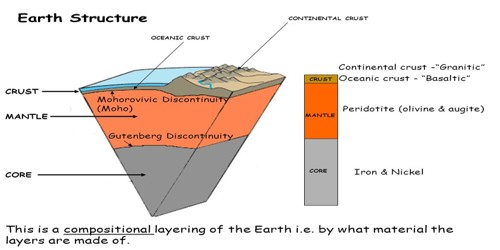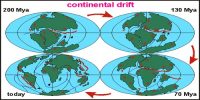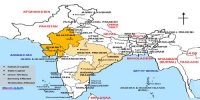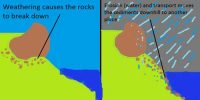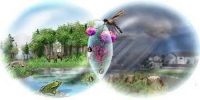Structure of the Earth: The Crust
The crust is the external layer of the earth. It is a slight layer of 0-60 km thick. The crust is the solid rock layer upon which we live. It is the farthest hard division of the earth. It is brittle in nature. The thickness of the crust varies under the oceanic and continental areas. Oceanic crust is thinner as compared to the continental crust. The mean thickness of oceanic crust is 5 km whereas that of the continental is around 30 km. The continental crust is thicker in the areas of major mountain systems. It is as much as 70 km thick in the Himalayan region.
It is made up of heavier rocks having the density of 3 g/cm3. This type of rock found in the oceanic crust is basalt. The mean density of material in oceanic crust is 2.7 g/cm3.

There are two diverse types of crust: thin oceanic crust that underlies the ocean basins, and thicker continental crust that underlies the continents. These two diverse types of crust are made up of diverse types of rock. The thin oceanic crust is composed of mainly of basalt, and the thicker continental crust is composed mainly of granite. The low density of the thick continental crust allows it to “float” in high assistance on the much higher density mantle below.
